Thursday, September 7, 2017
Balmoral Scotland’s Most Famous House
Balmoral Scotland’s Most Famous House
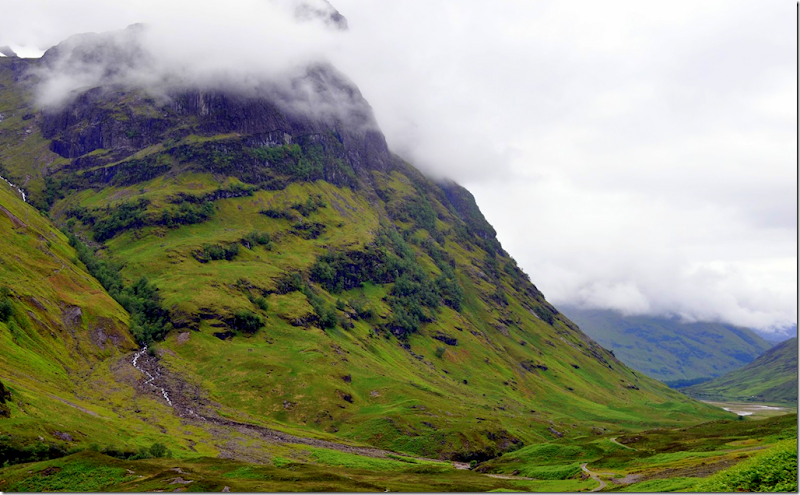
The Scottish Highlands
After recently looking at so much of Scotland through the lens of the novel and the Starz series Outlander, I kept thinking of Balmoral, the Royal Estate in the Scottish Highlands.
Certainly the most famous house in Scotland, Balmoral, unlike most of the Royals’ other residences like Buckingham Palace, is privately owned by the family. Queen Elizabeth spends much of August through October in the Highlands, as did her mother, grandmother, great grandmother and great-great grandmother (Queen Victoria.) For generations the Windsors have loved the cool, clean air of Balmoral which stands besides the River Dee on the vast Cairngorm National Park.
The history of the Royal Family and Scotland is a long one, going back to Victoria and Albert’s childhood when each read the books of Sir Walter Scott, a novelist who greatly romanticized the Highlands with his Waverely book series.
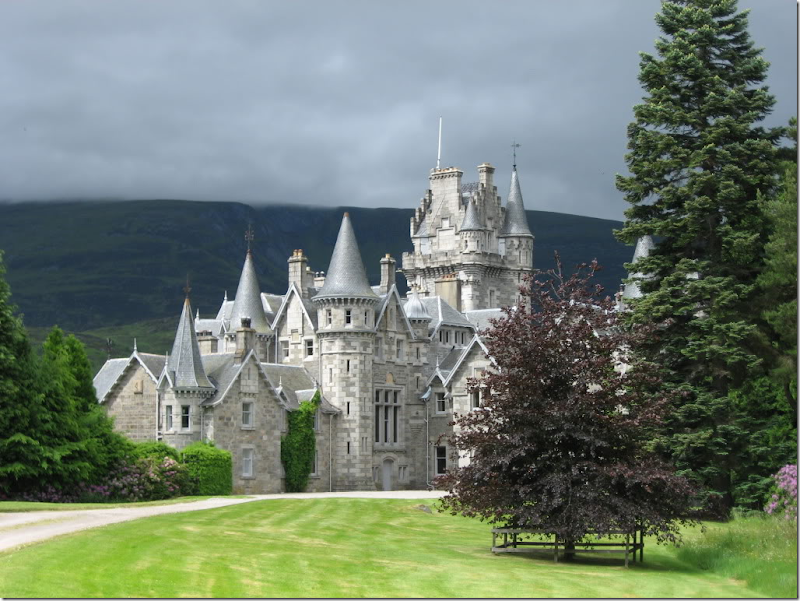
Ardverikie on Loch Loggan, where Victoria and Albert stayed in 1840s.
In the 1840s Victoria and Albert traveled to Scotland several times, once staying with friends at Ardverikie, a house borrowed from the Duke of Abercorn. While there, Victoria’s physician suggested they next stay on the River Dee for its more restorative airs and better climate.
Balmoral is 600 miles from London and back then it was quite a trek to reach, first by boat and then by carriage. The search for clean air was valid as London was a cholera infected cesspool, with the Thames overloaded with human waste. By 1856, London was suffering from what was called The Great Stink, and surely Balmoral was a most welcome relief to the royal family.

Victoria commissioned this painting by Sir Edwin Landseer as a Christmas present for Prince Albert to commemorate an early visit to Scotland. It shows Victoria and her son, the Prince of Wales, at Loch Lanner, with a gillie and a dead stag.
Prince Albert took the doctor’s advice and leased Balmoral as it was located on the River Dee. Balmoral has a long connection to Royalty. In 1390, King Robert II of Scotland, the founder of the Stuart Dynasty, built a hunting lodge there. Next, the Gordon family built a tower house on the property where they lived until the 17th century. The land was leased back and forth between several families until Prince Albert acquired the lease from Lord Aberdeen in 1848. He bought it outright in 1852 for 32,000 pounds, also purchasing Birkhall, and leasing Abergeldie Castle at the same time.

The original Balmoral, before any additions, shown on the River Dee.
Albert was later able to buy the estate after Victoria was bequeathed a sum of 500,000 pounds (today worth 50 million pounds) by John Neild, a miserly subject, totally unknown to her. She reluctantly (sure!) accepted the money after no heirs of Neild’s could be found and then graciously (sure!) gave some of the money to his long suffering housekeeper. At the time Victoria said she felt Neild gave her the money because he knew she would not “squander it.”

The original Balmoral from the River Dee.
Today, the estate costs 3 million pounds a year in upkeep and recently Prince Charles announced that when he ascends to the throne, he will turn over ownership of Balmoral to Scotland. Charles and Camilla currently live in Birkhall, which they had updated by renowned interior designer Robert Kime, who also updated their London residence, Clarence House. The couple are known as the Duke and Duchess of Rothesay when they stay in Scotland.
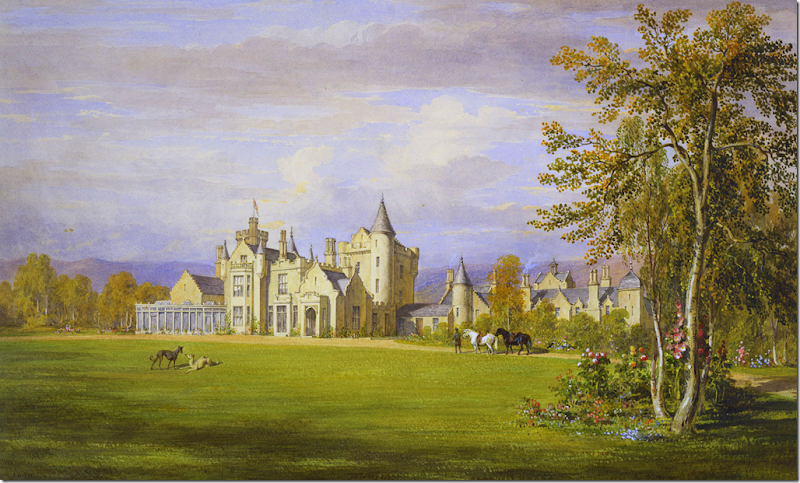
1850: Prince Albert added on to the old Balmoral. New rooms were built over the conservatory including a dressing-room for the Prince and a room for Princess Helena and her governess. New offices are seen on right.
Over the many years, Balmoral had been added on to several times, but it was still much too small for the Royals who had nine children, many servants, and an endless parade of visitors. In 1856 the old castle was demolished after the new one, which was designed by William Smith and the Prince himself, was erected. Room was made to accommodate a total of 120 guests and staff!
The architectural style is called Scots Baronial and it is quite regal and romantic at the same time with its large keep and the attached turreted country house. Critics thought the castle looked like it belonged more in Albert’s German homeland than in Scotland.
Along with the new Balmoral, Albert erected several guest houses and buildings on the estate and he had a bridge built over the River Dee linking Balmoral to Crathie. Additionally, he handled the interiors, created new tartans for Balmoral, and designed the uniforms for assorted staff, amongst other things.
So that the family had a place to stay, the old house was kept standing while the new house was built. Once it was completed, the centuries old Balmoral was razed. Here you can see the old Balmoral in front and the new Balmoral being built behind it. Beyond the new house is the River Dee. The views of the rivers and mountains were taken into consideration when the new house was designed. The Queen’s sitting room is on the second floor giving it the best views of the expansive estate.
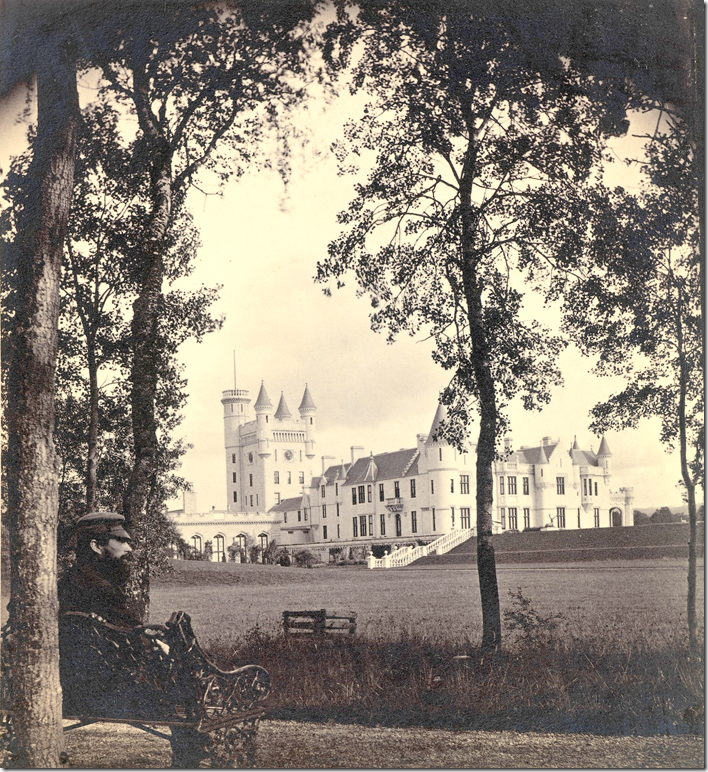
And here is the new Balmoral, after the old one was demolished.
![image_thumb131[2] image_thumb131[2]](http://lh3.googleusercontent.com/-TlRUIrBa3gY/VW6nO2HxfrI/AAAAAAAC4Lw/jB-ye0c3x-k/image_thumb131%25255B2%25255D_thumb.png?imgmax=800)
Balmoral today with its distinctive clock tower. Each side of the tower has its own clock.

The original plan – built around two center courts. The ballroom can be seen on the right portion, where the kitchen court is. Later, at the upper right by the kitchen court, the house was expanded.
Balmoral was built with granite from the estate, its 80 ft turreted clock tower is the focal point. Since the new estate was designed to look like the older one, critics considered it already outdated when completed.

Red Deer Stags on Balmoral estate, a hunter’s paradise.
The 50,000 acre estate has been updated by each successive royal. It’s a working farm where they raise the distinctive looking Highland cattle or Coos. The estate is known for excellent fly fishing and shooting.
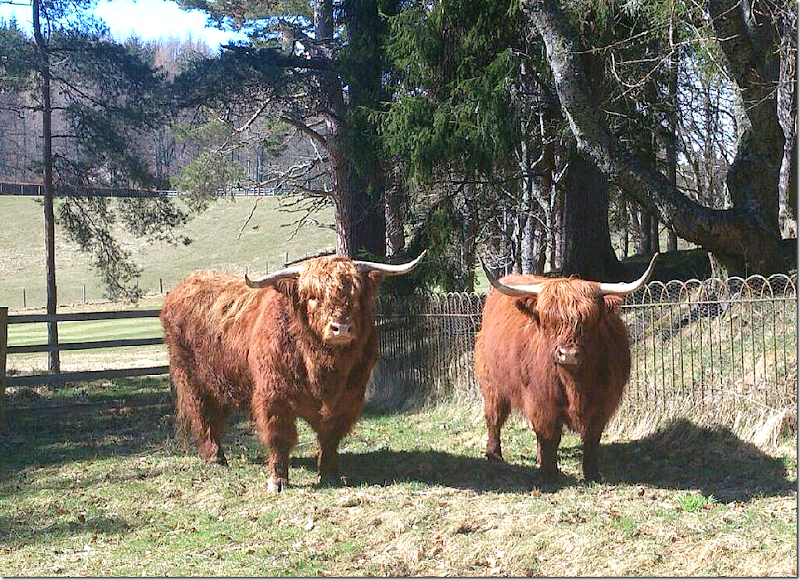
The adorable Highland Coos which are raised on Balmoral.
Queen Victoria and Prince Albert loved Balmoral and everything Scottish. Together, they helped to revive Scotland nationalism, attending the Highland games at Braemar and decorating Balmoral with tartans, which were of course once banned by Victoria’s ancestors. Victoria even considered herself a Jacobite although it was her own great-great uncle who was the “Butcher” Cumberland who slaughtered untold Scots at Culloden! In fact, one of the Stuart Jacobites even stayed at Balmoral after the Culloden massacre.
Time spent at Balmoral consisted of hunting and fishing, Victoria herself walked four hours a day. Since it is on the same latitude as Alaska, the sun doesn’t set until 10 pm during the summers, making for long days. Albert was kept busy with shooting and improving the property up until his death. Afterwards, Victoria added little except for monuments and statues in Albert’s memory. She spent four months a year there, mostly in the company of John Brown, a local gillie and then later, with her Indian servant Karim, whom the new King immediately ordered home to India after her funeral. Victoria’s last visit to Balmoral was in 1900, three months before her death.
After her death, her son, King Edward VII and Queen Alexandra continued to visit, as did their son, George V, who made many improvements to the estate, adding its formal gardens. During WWII, the family did not visit at all. The current Queen and her husband added more gardens, including a water garden. Today, there are over 150 buildings on the estate, including several guest houses which are rented out. The gardens, the carriage house, and the ballroom at Balmoral are open to the public.

Balmoral – the red mark in the Highlands of Scotland.

Balmoral – seen here on the River Dee which forms a U shape around the estate.
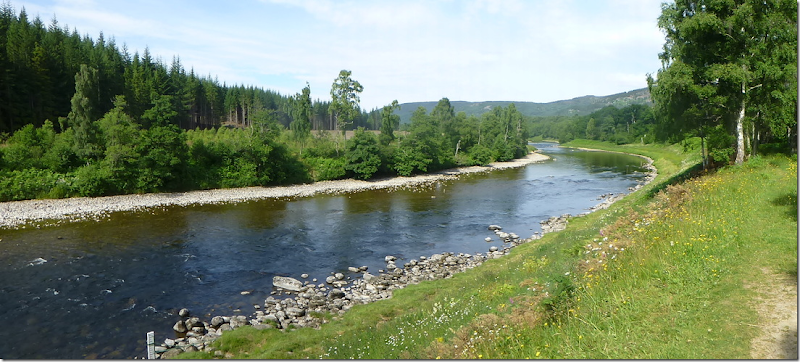
The river Dee.
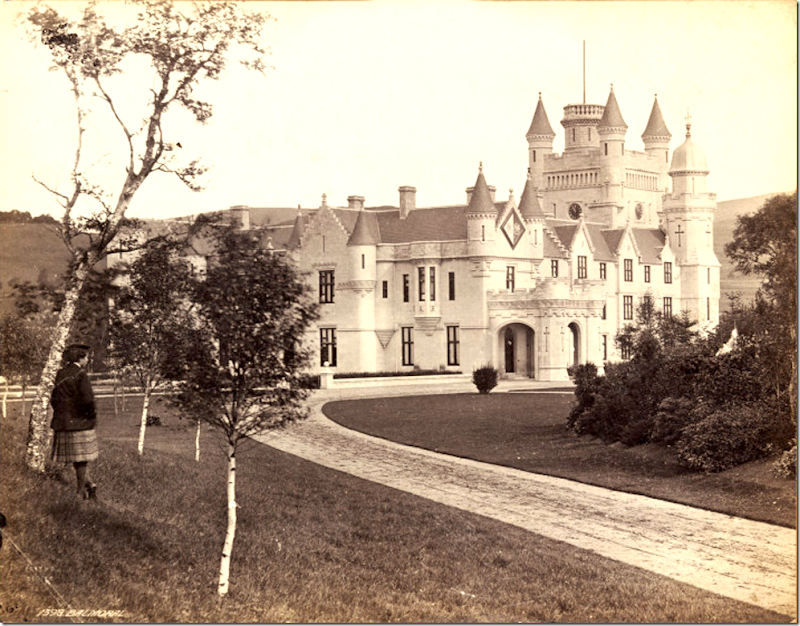
Early Balmoral

Painted from across the Dee.
![image_thumb145[1] image_thumb145[1]](http://lh3.googleusercontent.com/-NJNX83GVchg/VW6ntK4HHcI/AAAAAAAC4OA/HUn7SNpe9D8/image_thumb145%25255B1%25255D_thumb.png?imgmax=800)
Balmoral in the spring.

And in the summer. At the very left is the front entrance.
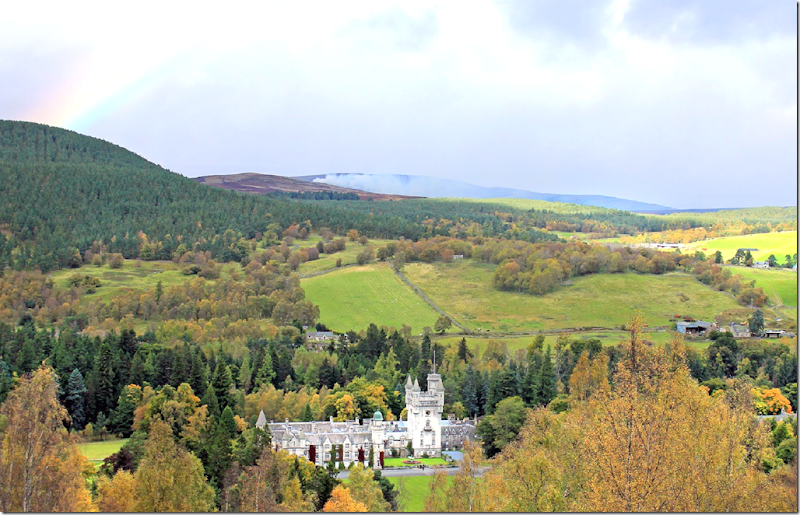
The fall. The royals visit from August to October.
![image_thumb137[1] image_thumb137[1]](http://lh3.googleusercontent.com/-1KLyELMLcCQ/VW6n40Zq6oI/AAAAAAAC4Ow/xBy4XNyK7lQ/image_thumb137%25255B1%25255D_thumb.png?imgmax=800)
And the winter.
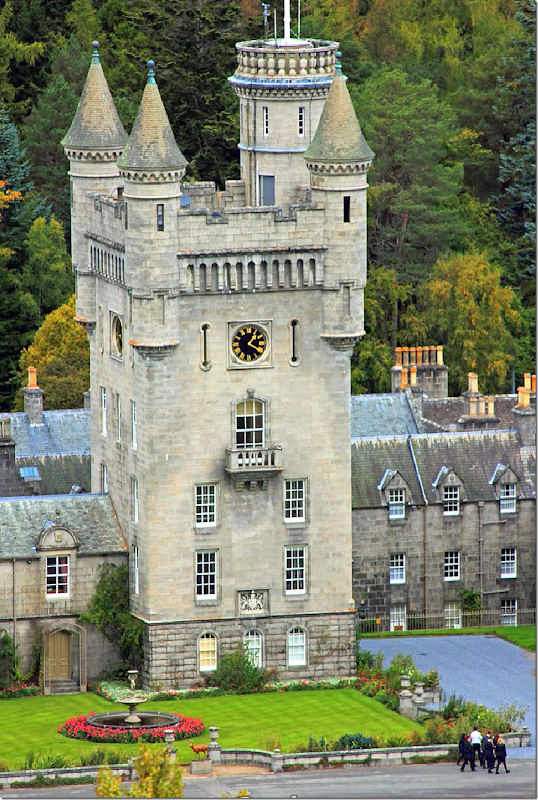
A close look at the beautiful clock tower.
The view from another side. Can you find the heater/ac unit in one window?

At the very left of the castle is the front door which is actually a porte cochere with wood garage doors that open on both sides.

The courtyard with the fountain.

The ballroom is at the very left.
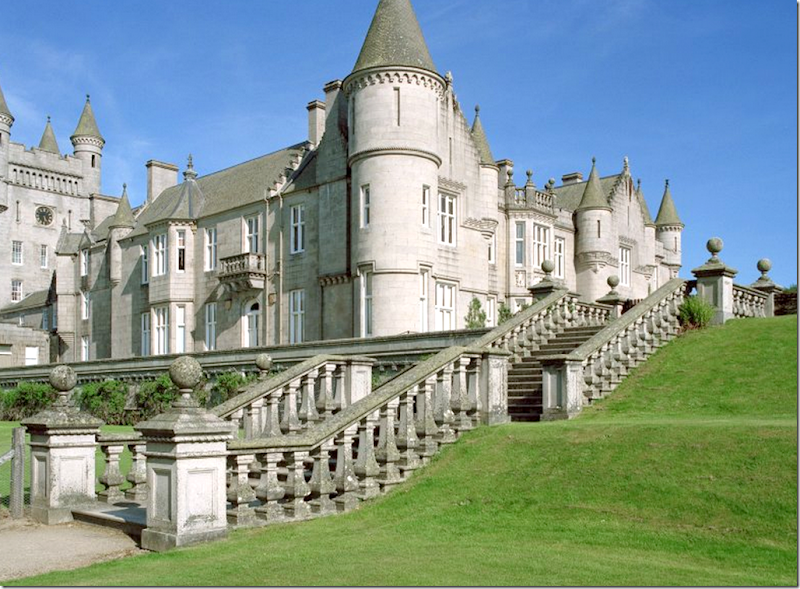
The grand staircase.
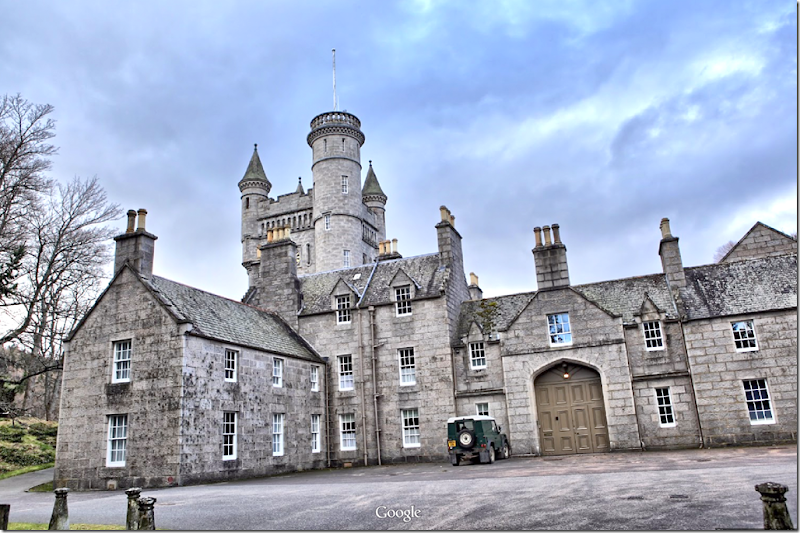
The back of the house near the kitchen court. Later, on each side, two story extensions were added to the house.
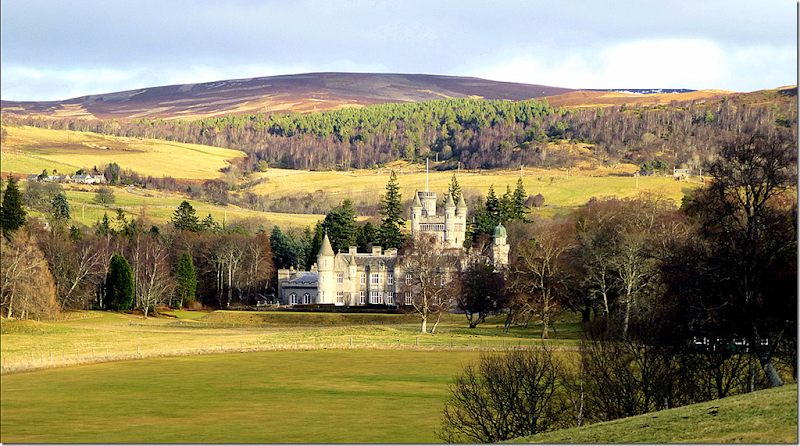
Another view of Balmoral which looks straight onto the public and private rooms. Usually pictures of Balmoral are taken from the front and this side is rarely ever photographed. Prince Albert placed the house on this spot so that the Queen could look out of her second floor study and see the best view.

On Visitor Day – you can see the scale of the house. This is the public rooms and the Queen’s private rooms above. The sunken garden is off this side.
The lawn, past the sunken garden that leads down to the River Dee.
This is the ONLY picture I could find of the view from the inside! The vista goes all the way down to the River Dee and is at its best advantage here, from the Queen’s second floor sitting room.

The entry opens to let in cars or carriages in Victoria’s time.
The summer ivy.
The Families:

A painting shows Victoria looking over the stags the Albert proudly shot.
Queen Victoria with her grandson, the doomed heir - Prince Albert Victor, her grandaughter the future Tsarina of Russia - Princess Alix, her daughter, Princess Beatrice and her granddaughter Princess Irene, pose along with her pug Bosco in 1887.
After Prince Albert died of typhus in 1861, Victoria only wore widow weeds black until her death in 1901.
Queen Victoria’s daughters - Victoria, Princess Royal, later Queen of Prussia and mother of Wilhelm II and Princess Alice, mother of the Alix, the Empress of Russia at Balmoral, 1856.
Her nine children married into almost every European royal family making Queen Victoria called The Mother of Europe. It is amazing when you realize how many Queens and Kings she produced through her children and grandchildren.
Kings of England, Prussia, German Emperor, Tsarina of Russia, Queens of Spain, Greece, Norway, Denmark and Romania
 Available link for download
Available link for download






